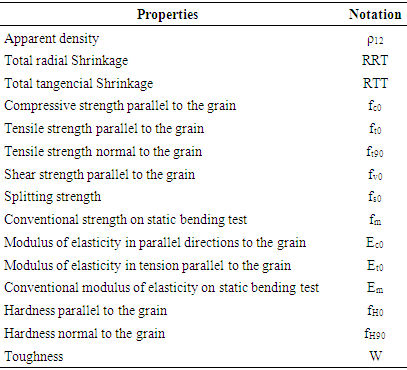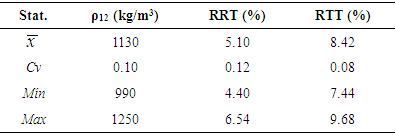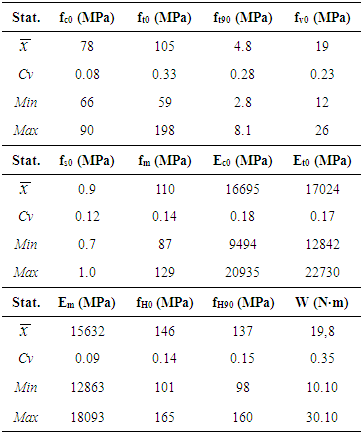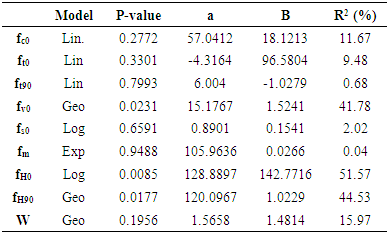| [1] | Vidal, J. M.; Evangelhista, W. V.; Silva, J. C.; Jankowsky, I. P. Preservação de madeiras no Brasil: Histórico, cenário atual e tendências, Ciência Florestal, Santa Maria – RS, v. 25, n. 1, p. 257-271, jan./mar. 2015. |
| [2] | Freitas, T. P.; Feuchard, L. D.; Oliveira, J. T. S.; Paes J. B.; Arantes, M. D. C. Caracterizações anatômicas e físico-mecânica da madeira Liquidambar sp., Floresta, Curitiba - PR, v. 45, n.4, p. 723 - 734, dez. 2014. |
| [3] | Carvalho, J.O.P.; Santos, J. J.; Saldanha, E.B.; Melo, A.S.G; Nascimento, S. M; Hirai, E. H.; Castro, T. C; Coelho, A. A; Batista, R. W. C. Identificação botânica de espécies arbóreas pouco conhecidas como contribuição ao planejamento do manejo de florestas naturais no estado do Pará. In: Anais da I Conferência do Subprograma de Ciência e Tecnologia; 2008; Belém. Brasília: CNPq; 2009. p. 579. |
| [4] | Costa, L. J.; Lopes, C. B. S.; Reis, M. F. C.; Candido, W. L.; Faria, B. F. H.; Paula, M. O. Caracterização anatômica e descrição físico-quimica e mecânica da madeira de Mimosa schomburgkii. Floresta, Curitiba – PR, v. 47, n. 4, p. 383-390, out./dez., 2017. |
| [5] | Iwakiri, S.; Trianoski, R.; Fonte, A. P. N.; França, M. C.; Lau, P. C.; Molleken, R. Potencial de uso de madeiras de Dinizia excelsa Ducke e Protium puncticulatum J.F.Macbr para produção de paineis EGP. Scientia Forestalis, Piracicaba-SP, v. 44, n. 111, p. 709-717, set. 2016. |
| [6] | Lahr, F. A. R.; Propriedades físicas de resistência e de elasticidade de espécies de madeira para emprego em estruturas, Encontro Brasileiro de Madeiras e em Estruturas de Madeiras, v. 3, São Carlos, SP, Brasil, 1989. |
| [7] | Dias, F. M.; Lahr, F. A. R. Estimativa de propriedades de resistência e rigidez da madeira através da densidade aparente, Scientia Florestalis, Piracicaba - SP, n. 65, p. 102 - 113, jun. 2004. |
| [8] | Associação Brasileira De Normas Técnicas – ABNT. NBR 7190. Projeto de estruturas de madeira. Rio de Janeiro, 107 p., 1997. |
| [9] | Lobão, M. S.; Lúcia, R. M. D.; Moreira, M. S. S.; Gomes, A. Caracterização das propriedades físico-mecânicas da madeira de Eucalipto com diferentes densidades. Revista Árvore, Viçosa-MG, v.28, n.6, p. 889-894, 2004. |
| [10] | Almeida, D. H.; Scaliante, R. M.; Christoforo, A. L.; Varanda, L. D.; Lahr, F. A. R.; Dias, A. A.; Junior, C. C. Tenacidade da madeira como função da densidade aparente, Revista Árvore, Viçosa-MG, v.38, n.1, p.203-207, 2014. |
| [11] | Mesquita, M. R.; Ferraz, I. D. K.; Camargo, J. L. C. Angelim vermelho, Dinizia excelsa Ducke. In: Manual de Sementes da Amazônia. Fascículo, v. 8, 12p. INPA, Manaus-AM, Brasil, 2009. |
| [12] | Grobério, M. P.; Lahr, F. A. R. Indicações para o emprego da madeira de espécies tropicais do Brasil, Madeira: arquitetura e engenharia, n. 8, 2002. |
| [13] | Rocha, H. L. S.; Paes, J. B.; Miná, A. J. S.; Oliveira, E. Caracterização físico mecânica da madeira de jurema – preta (Mimosa tenuiflora) visando seu emprego na indústria moveleira. Agrária, Recife – PE, v.10, n. 2, p. 262-267, 2015. |
| [14] | Braz, R. L.; Oliveira, J. T. S.; Rodrigues, B. P.; Arantes, M. D. C. Propriedades físicas e mecânicas da madeira de Tppnia ciliata em diferentes idades. Floresta, Curitiba – PR, v. 43, n. 4, p. 663-670, out./dez. 2013. |
| [15] | Torres, P. M. A.; Paes, J. B.; Nascimento, J. W. B.; Brito, F. M. S. Caracterização físico-mecânica da madeira jovem de Eucalyptus camaldulensis para aplicação na arquitetura rural. Floresta e Ambiente, Seropédica – RJ, v. 23, n.1, p. 109-117, 2016. |
| [16] | Muller, B. V.; Rocha, M. P.; Cunha, A. B.; Klitzke, R. J.; Nicoletti, M. F. Avaliação das Principais Propriedades Físicas e Mecânicas da Madeira de Eucalyptus benthamii Maiden et Cambage, Floresta e Ambiente, v. 21, ed. 4, p. 535-542, 2014. |
| [17] | Silveira, L. H. C.; Rezende, A. V.; Vale, A. T. Teor de umidade e densidade básica da madeira de nove espécies comerciais amazônicas, Acta Amazônica, v. 43, ed. 2, p. 179-184, 2013. |
| [18] | Gonçalez, J. C.; Breda, L. C.; Barros, J. F. M.; Macedo, D. G.; Janin, G.; Costa, A. F.; Vale, A. T. Características tecnológicas das madeiras de Eucalyptus grandis W. Hill ex Maiden e Eucalyptus cloeziana F. Muell visando ao seu aproveitamento na indústria moveleira. Ciência Florestal, Santa Maria – RS, v. 16, n. 3, p. 329-341, 2006. |
| [19] | MONTGOMERY, D. C. Design and analysis in experiments. Arizona: John Wiley & Sons, 730p, 2012. |



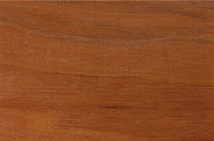




 ), coefficient of variation (Cv), the lowest (Min) and the highest (Max) of the physical and mechanical properties of the Dinizia excelsa Ducke wood, respectively.
), coefficient of variation (Cv), the lowest (Min) and the highest (Max) of the physical and mechanical properties of the Dinizia excelsa Ducke wood, respectively.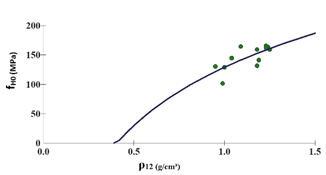
 Abstract
Abstract Reference
Reference Full-Text PDF
Full-Text PDF Full-text HTML
Full-text HTML